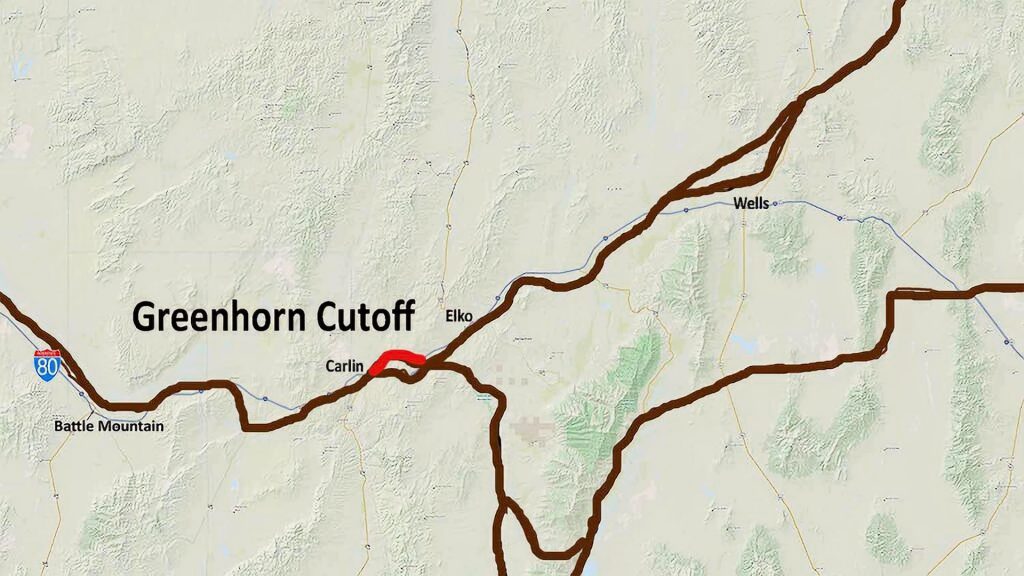
Greenhorn Cutoff - 1849
The Greenhorn Cutoff, approximately 13.5 miles long, carried wagon traffic around Carlin Canyon, southwest of Elko, Nevada. Despite its historical name, this route is not a cutoff but a detour that is several miles longer than the original trail through Carlin Canyon.
The Greenhorn Cutoff starts about 11 miles southwest of Elko, Nevada, roughly two miles southwest of the Hunter interchange on I-80. It heads west and north in a circuitous route over the Adobe Range, descends to Dry Susie Creek, and follows the creek back down to the Humboldt River. The route rejoins the main Humboldt River route less than a mile east of Carlin, Nevada.
Ruts and swales ascending the eastern-most hillside of the route are on public lands accessible to hikers. The setting remains substantially unchanged from its appearance during the emigrant period, and from the hills visitors have a good view of the Humboldt River Valley, including the area where the Hastings Cutoff enters the valley. This segment also includes some of the most striking topographic features mentioned in several emigrant accounts of the area, including the tiered ascent to the first summit, a deep canyon followed by a rocky ravine, and the highest summit that the emigrants passed on the Humboldt River leg of the emigration.
Emigrants began using the Greenhorn Cutoff as early as 1849 in order to avoid crossing the Humboldt River four times in Carlin Canyon during times of high water. When the water was low, the canyon was a much easier route than the “cutoff,” which entailed a hard, dry climb through the hills south of the river and was about three miles longer than the Carlin Canyon route. Some emigrants did not know that, however, and chose the “cutoff,” assuming it was always the preferable route. Trails historian Donald Buck has identified two emigrant accounts, those of Alonzo Delano in 1849 and Margaret Frink in 1850, which specifically mention the name of this route as the Greenhorn Cutoff. A ‘greenhorn cut-off’ is a road which a stranger or new traveler takes believing it to be shorter, but which turns out to be longer than the regular road. There were many such on the plains.” The Greenhorn Cutoff received its heaviest use by emigrants heading for newly discovered California goldfields in 1849 and 1850.
The Greenhorn Cutoff was a detour around a canyon that was risky or impassable during times of high water. The total volume of traffic on this route, which occurred primarily in 1849– 1850, is estimated at around 23,750 emigrants.



